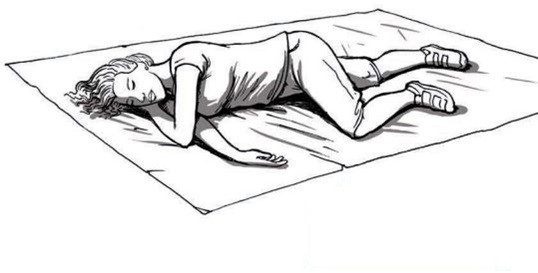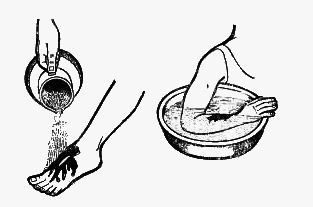
FIRST AID KIT
First aid can be defined as simple and effective measures used to limit the consequences of a sudden illness or injury until professional assistance is provided.
It is most important for critical health disorders - those that threaten some of the basic vital functions such as breathing, consciousness and blood circulation.

HOW DO YOU RECOGNIZE A CRITICAL ILLNESS OR INJURY?
- sudden and unexpected collapse of the affected person - he stops communicating, rolls his eyes, falls to the floor, there may be convulsions of the whole body;
- sudden breathing disorder, a feeling of "shortness of breath" or suffocation - the affected person is unable to utter a whole sentence in one breath;
- sudden chest pressure (in the back or above the navel), often associated with sweating, palpitations, shortness of breath;
- sudden paralysis of part of the body, loss of ability to speak (intelligibly), drooping corner of the mouth, restriction of the field of vision;
- an injury with the application of great force (comparable, for example, to an uncoordinated fall from the first floor);
- injury with the penetration of a foreign body into the body cavity;
- injury associated with significant bleeding (blood spurts or flows intensively);
- explosion, burn/scald.

PROCEDURE FOR RESOLVING CRITICAL CONDITIONS
KEEP A COOL HEAD AND DON'T PANIC
THINK OF YOUR SAFETY, look around carefully, put on protective equipment (gloves, vest) and ELIMINATE POSSIBLE DANGERS around the accident according to the specific situation:
- in the event of a car accident: securing the vehicles against movement with brakes or stones, placing a warning triangle, clearing the injured from the road, possibly pulling the injured out of the car (only if they are in danger while remaining in the car);
- in the event of a fire: by removing those present (bystanders and the injured) from the fire's reach, preventing its further spread (if possible), preventing major damage (removing bottles with explosives);
- in case of electric shock: by turning off the source or at least breaking the contact of the injured person with the current source, ensuring that no one else is injured;
- after the explosion: We deal with the removal (carrying) of the wounded from the danger area as quickly as possible, treatment later;
- after (during) the leakage of poisonous substances: by preventing further leakage (if possible), by preventing further contact with the substances in question;
- in case of injury by sharp or otherwise dangerous objects (weapon): ensuring that no one else gets hurt.
CLARIFY HOW MANY ARE DISABLED AND WHAT HAPPENED;
- help is needed quickly, but not hastily.
VERIFY THE CONDITION OF THE DISABLED PERSON(S);
- focus primarily on basic functions such as breathing, consciousness and circulation;
- then if he has burns, is disoriented or if he can walk.

CALL THE EMERGENCY SERVICE BY CALLING 112
- call directly from the affected person;
- ask the people around you for help.

PROVIDE FIRST AID
STOP ANY ARTERIAL OR VENOUS BLEEDING
- compress the wound (hold until help arrives), with a pressure bandage, or by strangulation;
- if blood seeps through the attached bandage, do not remove the original bandage, but apply a new one;
- keep the injured person lying down, this will slow down the blood flow;
- do not pull out a stuck object in the chest or abdomen - the bleeding could worsen.

IF THE PERSON IS CHOKING (cannot breathe at all)
- support him in coughing and possibly put herds in the back between the shoulder blades;
- if necessary, help him lean forward so that his head is lower than his chest and hit him again as described above;
- in the event of a collapse, try to tilt the victim's head back by pressing on the forehead and lifting the chin and check the oral cavity for foreign bodies (remove any obstructions if necessary) and determine the state of breathing by monitoring the movement of the chest and putting the ear to the mouth.

IF THE PATIENT BREATHES heavily but regularly
- help him take a suitable position for easier breathing - semi-sitting;
- if unconscious, put him in the recovery (stabilized) position on his side (this ensures a free airway and allows vomit or other secretions to flow freely from the mouth) and continuously monitor breathing until the arrival of rescuers;
- if you suspect a fracture, first fix the fracture and only then put him in the recovery (stabilized) position on his side;
- if you suspect a spinal injury, do not turn the injured person at all;
- treat any other injuries and search for the cause of unconsciousness (information from witnesses, alcohol, medication).

RESUSCITATION - CHEST COMPRESSION
IF THE PATIENT IS NOT BREATHING or just gasping
- turn the victim onto his back, ideally on a hard mat;
- in case of spasms of the whole body, wait until the spasms subside;
- place your wrist in the center of the unconscious person's chest;
- keep your arms straight and push vertically down;
- compress at a rate of 100 to 120 compressions per minute to a depth of 5 to 6 cm;
- do not interrupt until medical help arrives or until he begins to show signs of life.
If there is a defibrillator (AED - a device for restoring the activity of the heart using an electric shock) at hand, we will use it.
ENSURE THERMAL COMFORT
- try to keep the victim warm (by covering, wrapping in anti-shock film).

FIRST AID DURING A HEART ATTACK
A heart attack is manifested by sudden pain in the chest, there is a blockage of a blood vessel that nourishes the heart, and thus some part of the heart muscle finds itself without a blood supply. This is a very dangerous condition, which is the most common cause of cessation of vital functions in adults. Therefore, it is worthwhile not to underestimate pain, a burning or pinching sensation, pressure in the area of the chest, back, neck, arm or abdomen. The affected person is usually pale, has nausea or shortness of breath.
- place the casualty in a semi-sitting position and tell him to lean forward if it makes breathing easier;
- take care that he does not exert himself, does not work, does not go anywhere, preferably does not speak much;
- if he is prescribed medication for heart problems, help him take it;
- if the condition does not improve significantly within 5 minutes, or the patient has never had heart problems, call emergency services immediately;
- ventilate, loosen the clothing around the neck and calm the victim;
- monitor the affected person until the arrival of the emergency services, if the condition worsens, inform the paramedics again and respond to the situation;
- when the patient becomes unconscious with cardiac arrest, place him on his back on a firm mat and begin indirect cardiac massage immediately.

FIRST AID FOR BURNS
- remove the heat source or move away from it;
- do not touch the wound and protect it from contamination;
- do not remove remnants of clothing from the wound or other adhering objects;
- do not give the affected person anything to eat or drink, because later it may be necessary to perform the procedure under general anesthesia;
- start cooling the burn with a gentle stream of running cold water, immersion in cold clean water or compresses from a sterile drape;
- refrigerate for at least 20 minutes or until emergency services arrive;
- for extensive burns, cool the most sensitive areas (face, hands, neck);
- at the same time, quickly remove rings, watches, chains and others from the injured area before it starts to swell;
- never put ointment or cream on the burn and do not puncture the resulting blisters;
- cover the wound with a sterile dressing large enough to completely cover the burn area.

BODYID BRACELET
A visibly placed Body ID bracelet can help rescuers with your quick identification. Thanks to it, they can find out what your health condition is, what allergies you have, and they will be able to take this into account when providing medical help, which can increase the chance of survival in severe cases. It will also help with contacting the mentioned close people.
On the BodyID bracelet, you can mark e.g. name, surname, year of birth, state or city, phone number of loved ones, allergies, blood group, diagnoses.
Take the time to create one that matches your medical history and rest easy knowing you're safe in the event of an emergency.
